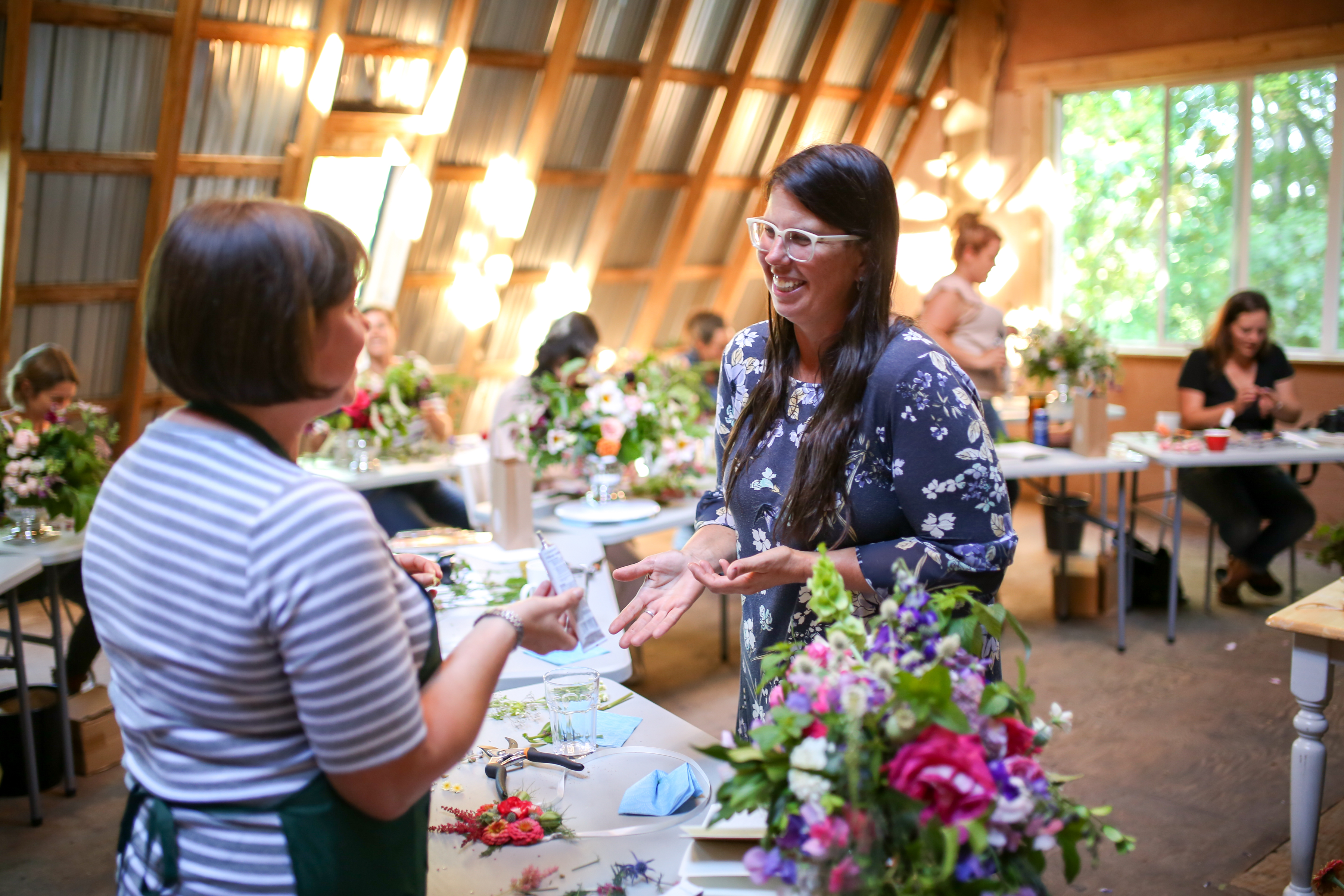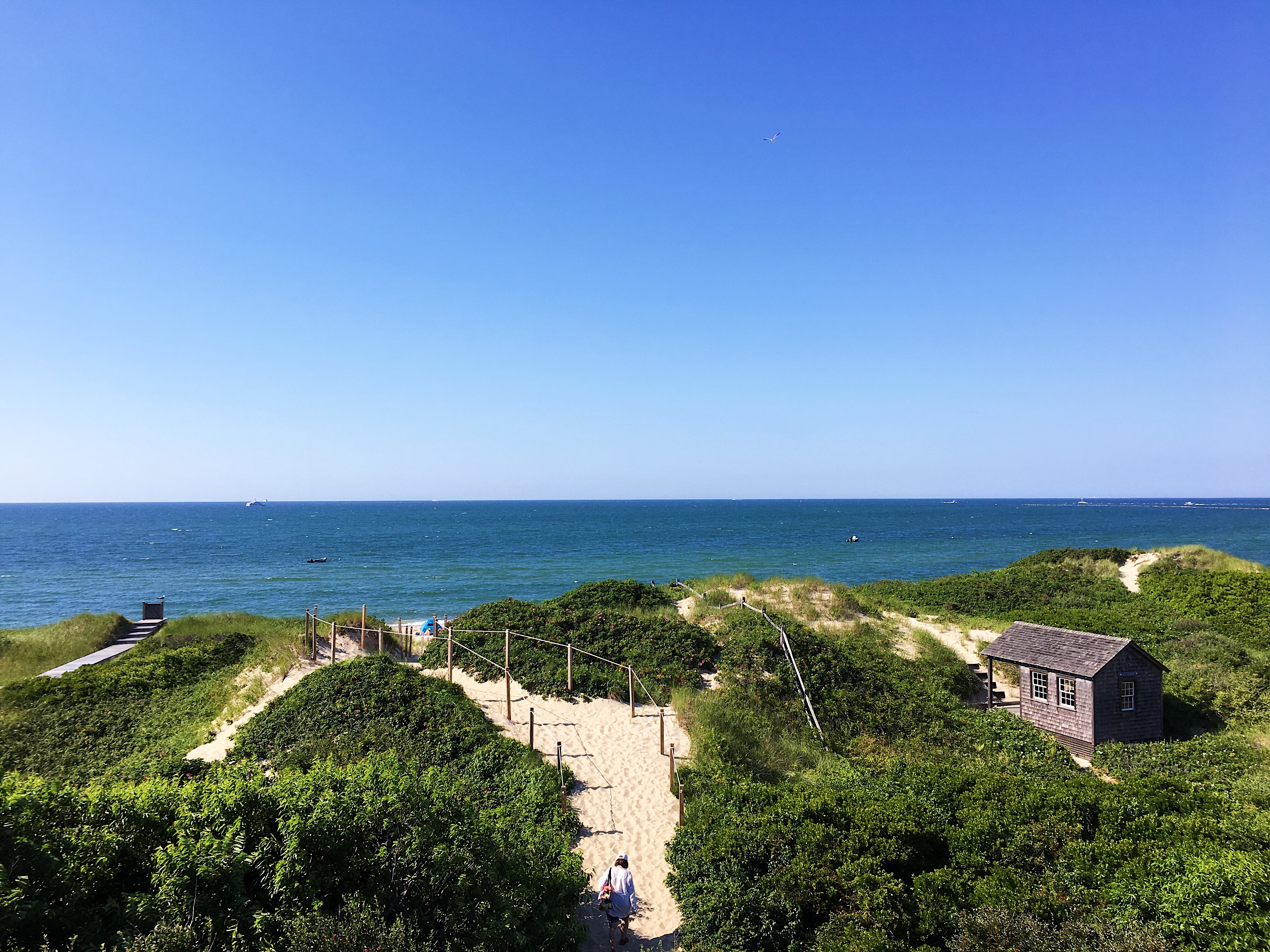I travel a lot during the growing season, more so than most farmers I would guess. I love to teach, and I’ve found traveling to teach other flower farmers and florists around the U.S. and Canada to be a very rewarding extension of my leadership in the farmer-florist movement. It makes the most sense to go do these floral design workshops and master classes while flowers are blooming at the host farms. So that means leaving my own farm in the height of our growing season. No small feat!

Getting away from the farm can be hard! Be it flowers or veggies or animals, farming is a lifestyle, not a 9-5 job. Taking a vacation – even just a long weekend – isn’t as easy as asking your boss for some time off. But if you don’t manage to get “off property” once in a while, you’ll find yourself burning out and missing opportunities to get some fresh perspective. There’s nothing like a trip in July (or whatever the hottest month is at your farm) to make the remaining season feel manageable!
So here are some tips I’ve come up with over the years as I’ve picked up anchor mid-season to sail away on some flower adventures (nautical analogy a result of a recent teaching stint on Nantucket Island).
1. If you want to really travel in the growing season, you need to HIRE help. It’s a lovely notation that you can ask a friend, find a volunteer, or rely on some unpaid interns to steer the ship in your absence. But the reality is that in the dog days of summer, the only people who are going to reliably show up to get shit done are paid employees who have rent to pay and groceries to buy. So first things first: HIRE some help!
2. You’ve got the help hired. Now what? Create “task tickets” for any tasks that require more than the most basic knowledge. These sheets outline every. single. step. necessary to complete a given task at the farm. You’ll not be making all these sheets at once (whew!), but collectively over time as you need them. Every time you leave your farm, it’s a great opportunity to think about what critical tasks will need to be done and to take the time to create any associated task ticket. As time goes on, you’ll find you’ve been building a training manual too so every time you hire new employees, you’ll have something organized and detailed to guide them as they get started. Print out task tickets and laminate them and put them in a binder in your processing area so it’s easy for employees to find on their own. When I leave the farm, I pull any relevant sheets out and put them on a clipboard with the to-do list.

3. A day or two before your trip, take a walk around the farm with your crew. Point out any areas you have particular concern about (maybe a patch of perennials being consumed by weeds that would be a great task for them to tackle while you’re gone) and make sure to discuss any crops that might be coming into harvest while you’re gone so they know what to look for and how to properly harvest. If they don’t already know, make sure you go over how every part of the irrigation system works and where the main water valve is (should they need to turn it off if a line bursts). Also show them where the breaker box is for the electricity in case the cooler loses power while you’re gone and they need to see if the breaker is flipped.
4. Send a comprehensive email to your entire crew right before you leave. This email should be your “brain dump” where you outline as clearly as possible all your expectations, what tasks HAVE to be done, what tasks will hopefully get done, what crops to harvest, any customer orders that need to be handled in your absence, what irrigation zones to run on what days, etc. etc. This email will take you a long time to write. But it’ll be worth the effort. When the whole crew has all the same information and it’s easily accessible on their phones, they can work much more effectively and efficiently without lots of humming and hawing about what they might have heard you say that another one of them didn’t hear you say. I actually send an email like this every week (on Sundays) to my crew now as I’ve found this system works great for keeping the gears running smoothly through the thick of the season, regardless if I’m there or not.
5. Get timers for your irrigation. Get the fancy kind that lets you set up zones and set specific times for each zone. Then make sure you put in fresh batteries to each timer before you leave. Also check all the hose fittings on all the irrigation around your farm a few days before your trip. Without fail, a hose always bursts right before or after I leave, causing extra stress. Watering tends to be the thing farmers get the most anxious about while they’re gone so make it as automatic and trouble-free as possible before you leave. If this sounds like a lot of work and you’re thinking taking a trip isn’t worth it, remember, this is all stuff you should be doing mid-season anyway!
6. Speaking of watering, the worst thing to leave behind when you head out for a trip is a bunch of freshly sown seed trays. Even the best employees sometimes forget seed trays, especially if there are just a few tucked away out of sight in the shade out of the summer heat. I usually know my travel schedule several months in advance so I make sure to shift the seed sowing schedule a bit to sow any seeds at least 7 days before I leave so they’ve typically had time to germinate before I go. Ideally I’d have a 14 day buffer, but that’s often tricky to manage since we are sowing something nearly every week of the year around here. If you have the operation that will let you set up a mist system on timers over your propagation benches, then you don’t need to worry about this.
7. If you’re a new farmer or one that hasn’t ever mustered the courage to leave your farm during the growing season before, plan a “mini” trip this yet summer to get your training wheels. A short trip will help you get a feel for what tasks you need to think about before leaving for a longer trip. Try leaving the farm for a 2 day camping trip or go take the kids to see their grandparents and stay overnight (and into the next day…no cheating and making the trip less than 36 hours or it won’t really count). Take notes for yourself throughout the process so you remember what you need to think about the next time you leave.
8. Speaking of the length of trips, I’ve found that no matter how thorough I try to be with planning and preparing, being away from the farm for more than 5 days during the growing season is really hard on me, my crew, and the farm. The war against crabgrass can be lost in 5 days and whole crops consumed by that devil of a weed. A weekly customer can more than likely handle one week of less-than-stellar service/product if it comes to that, but they’ll start to be less forgiving if it happens two weeks in a row. So my in-season trips are limited to no more than 5 days.

9. If you’re traveling “just for fun” (I hope!!) rather than a conference or some other organized event, think carefully about the timing of the trip. Every farm has a different rhythm so it’s hard to say what’s best for you, but around here, being away the second week of July is especially rough because so many of our summer crops are coming into peak bloom that week and the crew tends to get overwhelmed if I’m not there to both direct their efforts and jump in beside them to get the cutting done on those hot days. If you’re a new grower and don’t yet have a feel for your farm’s cycles, take a careful look at your sowing/harvest schedule (spend your winter doing a detailed spreadsheet so you know) and see what weeks are heaviest and what weeks are forecast to be a bit lighter. And pay attention this season to what weeks seem easier than others so you’ll know more for next season.
10. And my biggest tip to save your sanity? Remember: PLANTS WANT TO GROW! It’s in their DNA to do their darnedest to keep on growing against the odds. Give them half a shot, and they’ll be okay. You leaving for a few days is not going to be the end of the world, especially if you do some prep work in advance to help your crew do their jobs well while you’re gone.
So there you have it! A roadmap for going on a road trip during your growing season. I always am so grateful when I have a chance to get away as it makes me all the more thoughtful and energized when I return, having fresh eyes for the chaos that is my small farm in summer. The farm is never going to be in “great shape” when you get back, but that’s okay. Make sure to manage your expectations. The best thing you can do as a farmer is to give up any sense of perfectionism and aim for “okay” rather than great! Flower farming is a marathon – uphill the entire way – in bad weather – with poor footing. Be kind to yourself and know that you’re doing your best against the odds. No farm will ever be perfect and we only live once. Now go plan a trip!!
[I see you out there… the one in the back who is shaking her head, thinking she’ll never be able to get away from the farm… YES YOU CAN!!!]

Thank you so much for this! We are in the planning stages of our flower farm and will get going next spring. We are switching from animals to flowers. I have thought about this subject and decided that i will only be taking vacations between November and January, lol. Maybe I CAN get away a weekend for my sanity. 🙂
Praise to this! What a great reminder and killer steps to help support sanity!!!